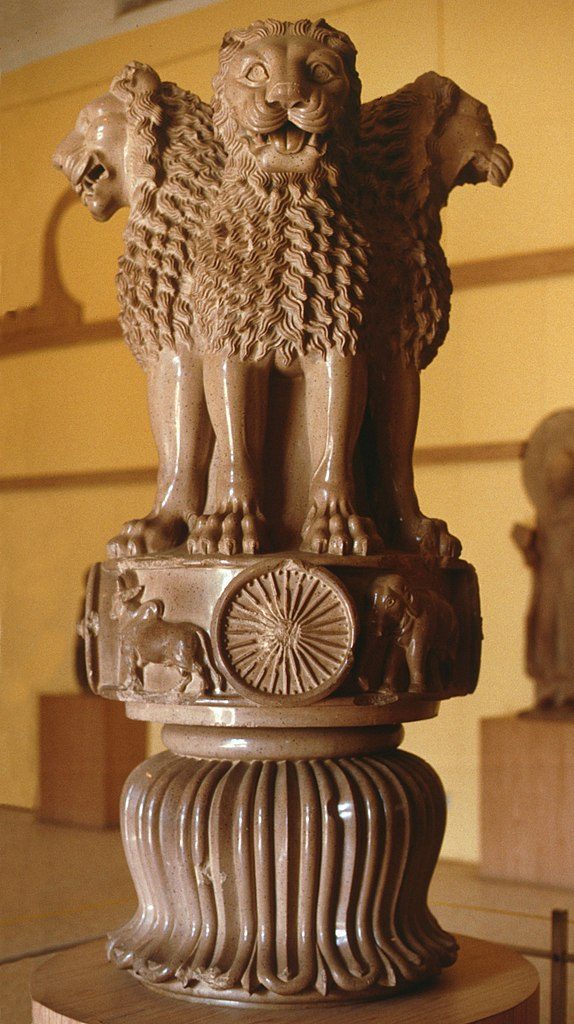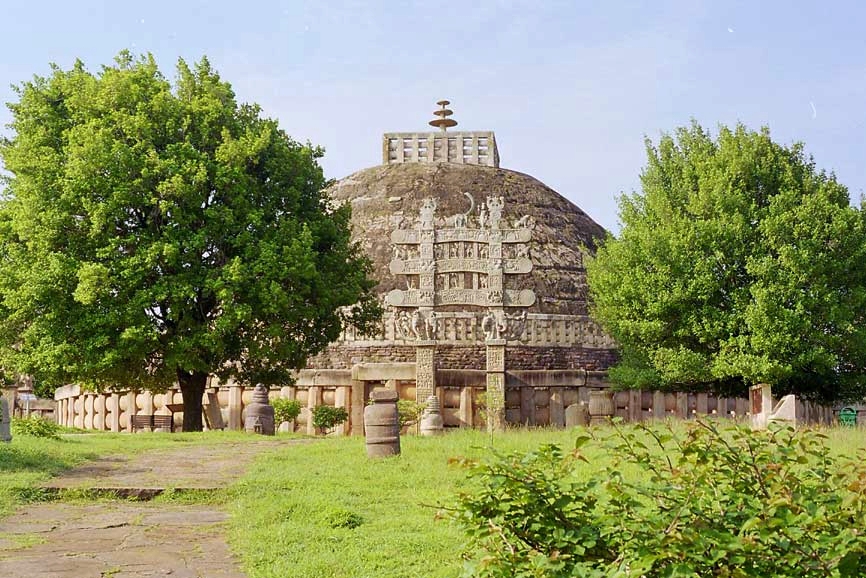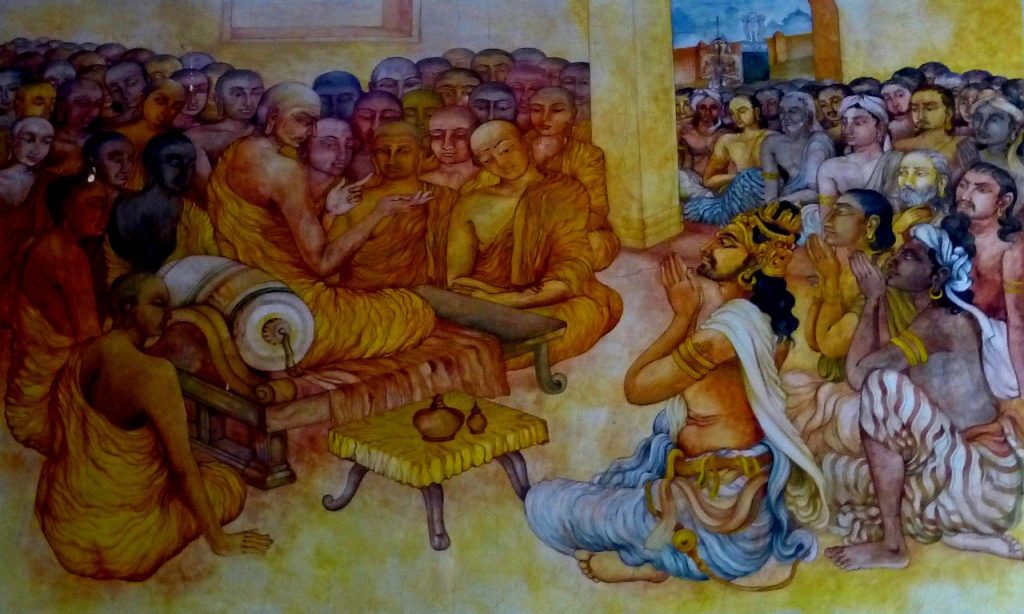From a monastic path of practice to a social ethics and a religion for the laity
Ritual, but also a sophisticated philosophy
Many are those who, on their first visit to a local Buddhist centre, are surprised at being invited to take part in pujas, chant mantras, do prostrations, light candles, burn incense …There may also be talk about Bodhisattvas, Dhyani-Buddhas, or a Cosmic Buddha. With the emergence of Mahayana, Buddhism is said to have turned into a religion. In the eyes of those who have left Christianity in search of a more rational approach to their inner lives, this is not what they had expected when reading about the man who left a palace on a quest for enlightenment. Early scholars of Buddhism in the West showed a clear preference for the “rational” demythologised Buddhism of the Theravadins. Modern scholars, however, now see the Mahayana as a highly sophisticated development of Buddhism, as they have risen to the challenge of understanding such complex Buddhist writings as those of the Madhyamaka, Yogacara, or Huayan schools, or the writings of Dogen.
Nagarjuna (150-250 CE), founder of the Madhyamaka School (the Middle Way School) provided a philosophical structure to Mahayana, and has been credited with the Second Turning of the Wheel of Dharma. The concept of sunyata (emptiness) reasserts the Buddha’s teachings about anatman, as “all things,” not only the self, are clearly described as empty of “intrinsic existence.” Co-dependent origination is developed beyond the psychological context in which it was presented in the Twelve Links (Nidanas) as the structural “form” of the “formless.” The Middle Way between self-indulgence and self-mortification, or between eternalism and annihationism, is developed into the doctrine of the Two Truths – conventional and ultimate. Out of the Mahayana tradition will later emerge such teachings as those of the “Unobstructed interpenetration among phenomena” illustrated by the Huayan’metaphor of Indra’s Net, and those of Zen, based on the Great Doubt, rather than the usual requirement of an unequivocal belief in a set of scriptures based on the visions of ancient prophets.
How, then, are we to understand the evolution from Gautama’s existential quest for wisdom into a religion centered on a Cosmic Buddha?

Asoka (c. 268-c 232 BCE)
Paul Williams tells us that, according to the the historian A. L. Basham,“prior to Asoka Buddhism was a fairly minor factor in the religious life of India.” Evidence of this is that archaeological artifacts before Asoka are “scanty’ while, after Asoka, they are “relatively abundant.”
Though Buddhism never became the empire’s official religion, as Christianity did under the reign of the emperor Constantine, Asoka’s conversion to Buddhism played a key role in its development into a devotional religion for the lay community.
Before Asoka came to power around 268 BCE, the historical scene had undergone a dramatic change. In 327 BCE Alexander the Great had entered the Indus Valley. His short stay of only four years, nevertheless, left a profound cultural, as well as political, imprint on north-west India as it introduced Hellenism into the region through the Greco-Bactrian kingdom and its Gandharan offshoot. Following on the heels of Alexander came Chandragupta Maurya, founder of the Mauryan empire, who defeated the wealthy and unpopular Nanda kings of Magadha in 321 BCE, before embarking on a reconquest of the territories Alexander had occupied in the Indus Valley. Chandragupta thus brought into being the largest empire India had ever known. Asoka, the third ruler of the Mauryan Dynasty inherited this huge empire around 328 BCE. All of this had happened within a period of one century of two after the time of the Buddha (whether you accept 563-480 BCE or 480-400 BCE as the dates of the Buddha – those being the respective dates held by the Southern and the Northern Buddhist traditions).

Though Magadha was still the most powerful state in northern India, political power had apparently slipped from Vedic Indo-Aryans, with both the Nanda and the Mauryan dynasties said to be of Shudra origin. Chandragupta Maurya converted to Jainism in later life, and Asoka converted to Buddhism, first nominally, then actively after his bloody conquest of the Kalinga kingdom (today Odisha) for which he expressed much remorse. Though Asoka’s conversion was a personal decision, Buddhism did provide the blueprint for the values embodied in his social policy. He supported medical services for humans as well as animals, encouraged the building of wells and rest-houses for travelers, gave released prisoners financial help, and encouraged them to acquire good karma through good conduct. In the tradition of all sramanic schools, he emphasized ahimsa – non-injury or non-violence, became a vegetarian and abstained from the hunting activities traditional of royal households. At a time when the duty of a ruler was regarded as that of expanding his realm through conquest, Asoka renounced war, and focused his efforts instead on improving the lives of ordinary people.
Harvey writes: “Asoka adopted the social ethic of Buddhism as the guiding principle of his rule, and has been seen by Buddhists as the model of a compassionate Buddhist ruler.”

Part of this social ethic was tolerance for other religious practices, Brahmins, Jains and Ajivikas, and such tolerance has remained a religious attitude characteristic of India for most of its history. Asoka had exhortations inscribed on rocks and pillars throughout the empire to promote values conducive to “a harmonious society and heavenly rebirth as the goal of a good life according to Dhamma, making no mention of Nirvana.” In other words, his was a practical application of the Buddha’s teachings at the socio-political level, with no reference to the philosophical doctrines and soteriological practices of the Buddha. While some edicts made explicit reference to Buddhist teachings, others simply encouraged people to lead an ethical life and do “good deeds.” The target of Asoka’s policies was the lay population. This was a new development, which took place before the official date given by scholars for the emergence of Mahayana (150 BCE).
It would be correct to say that, even though the Buddha had been concerned about equality (people of all castes were accepted in the Sangha, including women, after these had insisted on joining the order for long enough … ), the path of practice he taught appears to have been understood as a call to join the monastic life. It was said that life in towns and cities was too chaotic and noisy to provide the calm setting required for a meditation practice. This accounts for the fact that, even today, Buddhist practice is still primarily viewed as an individual practice, rather than a social institution to which like-minded practitioners are keen to belong. Buddhism is still regarded as primarily a Monastic Order, it is not, like Christianity, a Church with families gathering for mass on Sundays.
Stupa-cult

Asoka took serious steps to develop a devotional practice in the shape of a stupa-cult. He built the original ten stupas, including the original stupa at Sanchi, in central India, over which the current Sanchi stupa was built in the first century CE. According to Harvey, “The four gateways, or toranas, place the Stupa symbolically at a crossroads, as the Buddha had specified, perhaps to indicate the openness and universality of the Dhamma.” Harvey adds that, until then, the focus of devotion had been the Bodhi tree, the original Bodhi tree, or other trees grown from its cuttings or seeds. The shape of the stupa had developed from pre-Buddhist burial mounds for kings, heroes and saints, and held relics of the Buddha. In the absence of representation of the Buddha in human form, these holy relics provided as close a presence of the Buddha as could be achieved. Buddha-images appeared much later, during the reign of the Kushan ruler Kanishka l in the 2nd century CE. Until then, a symbol – a Dhamma-wheel above an empty throne with footprints – signified the Buddha’s presence.
The Third Buddhist Council and the launch of a missionary activity
Asoka is said to have convened the Third Buddhist Council at his capital Pataliputra around 250 BCE. Discussions focused primarily on monks holding views regarded as erroneous. The most significant outcome of the Council, however, was the decision to send monks as missionaries to other parts of the civilised world, notably the Hellenistic world, south India and Ceylon, where Asoka sent his own son. Of special interest are the Buddhist monks who were sent to the new city of Alexandria in Egypt, then a meeting place for the greatest minds of the time. This missionary activity prefigured the transmission and translation of Buddhist texts to East Asia along the Silk Road, and perhaps, even the worldwide spread of Buddhism we are witnessing today. The Buddha had explicitly asked that the Dharma be taught in in local languages, not fixed in Sanskrit as the Vedas had been. Buddhist teachers and practitioners have definitely complied with his wish!
The way of the mind and the way of the heart
It is clear that, long before Mahayana texts were clearly seen as a departure from the Pali Canon followed by the Theravadins, Asoka had already engaged the process which enabled a path of practice originally meant for a monastic setting, to develop into a religion for the lay community. This being so, Mahayana texts will have to be regarded as having ensured that no corruption of the teaching occurs in the process, rather than having in any way triggered what is an expansion of the Dharma beyond the walls of the monastery to reach out to the population at large.
Japanese Buddhists use a formula which encapsulates the contrast, as well as the equivalence, between the way of the mind – meditation – and the way of the heart – devotion. Meditation practice is described as reliance on “self-power” (jiriki). Devotional worship is described as reliance on “other-power” (tariki). That what the West calls the mind, Japan (and China) calls the heart-mind (Ch. xin, Jap kokoro). No wonder then that East Asian Buddhists see the two practices as merely reflecting personal inclinations – intellectuals often prefer looking within, observing the way the mind operates, while sensitive individuals will respond better to a devotional worship that raises them above their worries to embrace a higher more unified state. Zen, which some may see as epitomizing Japanese Buddhism, is in fact practiced by only a minority. By far the majority of Japanese follow the devotional practices of the Pure Land School. The way of the mind and the way of the heart are regarded as equally leading to spiritual realization. The Cosmic Buddha is not an omnipotent higher Being we are required to obey, it is sunyata, a dynamic conditioned arising of forms out the formless. As Nishida Kitaro asserted, each of us is the conscious vehicle through which the formless self-determines as the forms of phenomena.
Sources
Paul Williams – Mahayana Buddhism: The Doctrinal Foundations 2nd edition (2009)
Peter Harvey – An Introduction to Buddhism: Teachings, History and Practice (2013)
Nishida, Kitaro – Last Writings – The Logic of the Place of Nothingness and the Religious Worldview (1945)

